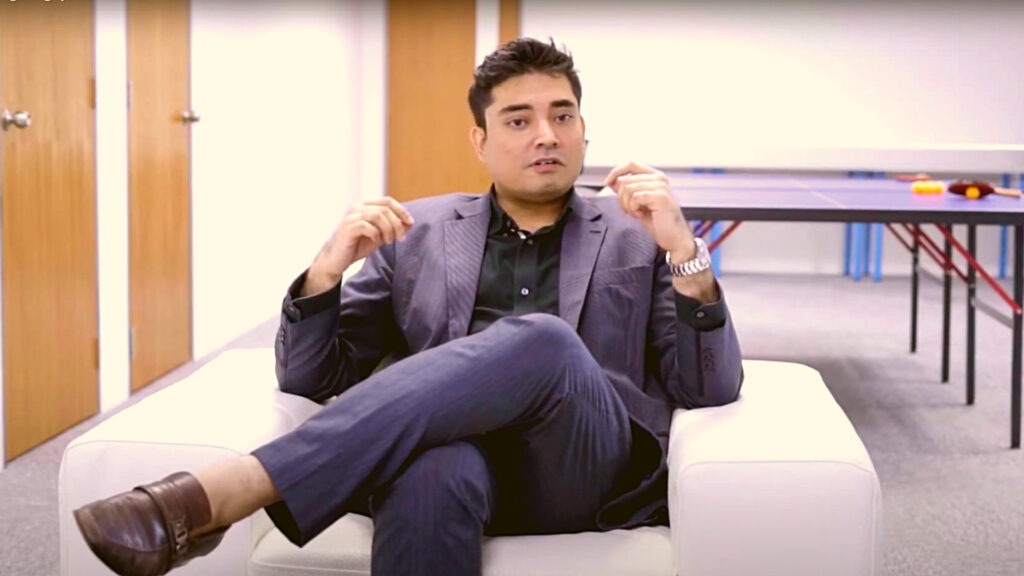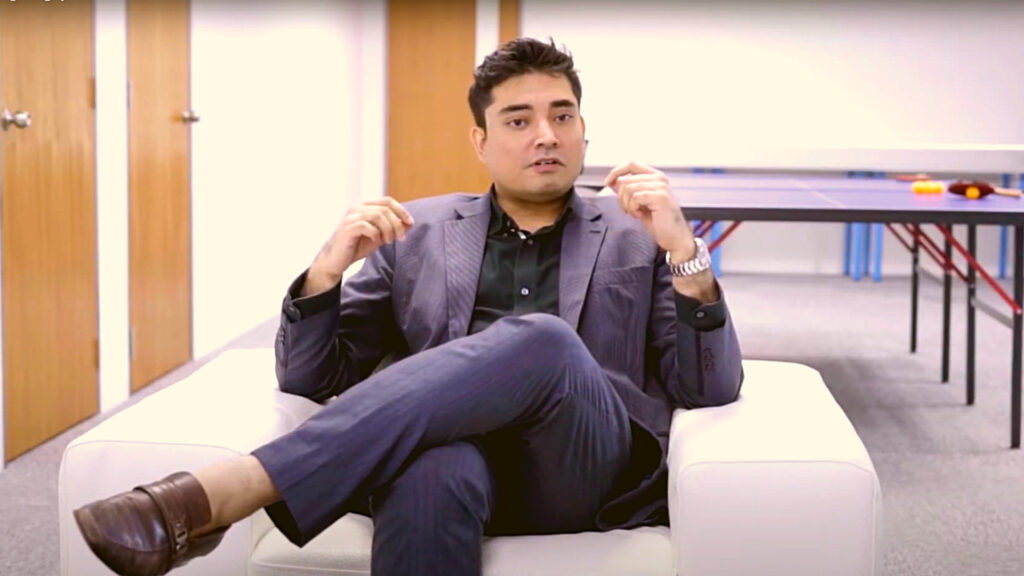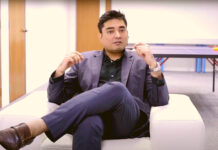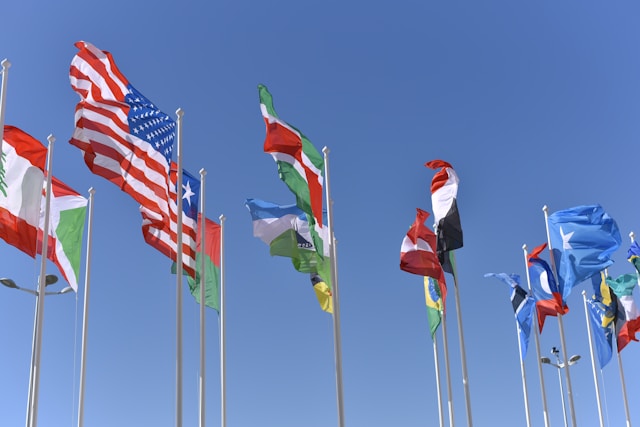Sancy Suraj, the Singaporean memory athlete, has set yet another record, this time for the Fastest Time to Identify All National Flags. On February 7th, 2021, he was able to identify and name all 197 flags in just 8 minutes and 47 seconds. This is an incredible feat and has garnered attention from around the world. In this article, we will be interviewing Sancy and delving deeper into his methods and inspiration.

How did Sancy Suraj set his world record for flag identification?
Breaking the record for the Fastest Time To Identify All National Flags was an incredible experience, and one that required a lot of preparation and dedication. To set the world record for flag identification, I had to identify all 197 national flags in the fastest time possible, typing the corresponding country names as I went. This meant not only memorizing each flag and its corresponding country, but also being able to quickly recall that information when I saw the flag during the competition.
To prepare for the competition, I spent many hours studying and memorizing the flags of each country, as well as their corresponding names. This involved not only looking at pictures of the flags, but also studying the details of each flag and understanding the meanings behind the symbols and colors. I also made use of mnemonic techniques, such as creating visual images in my mind to associate with each flag and country name, which helped me to better retain the information.
During the actual attempt, I relied on my memory and mental associations to quickly recall the names of each country as I saw their flags. I stayed focused and maintained a steady pace, trying not to waste any time hesitating or second-guessing myself. It was an intense and nerve-wracking experience, but I was able to stay calm and confident throughout the competition, which I think was a key factor in my success.
Overall, setting the world record for flag identification was an incredible achievement, and one that I’m very proud of. It required a lot of hard work and dedication, but it also taught me a lot about the power of the human mind and what we can achieve when we put our minds to it. I hope to continue challenging myself and breaking records in the future, and inspiring others to do the same.
What techniques did Sancy Suraj use to remember the flags?
Memorizing 197 national flags and their corresponding countries is no easy feat, but I was able to achieve this by utilizing a number of memory techniques. One of the key techniques that I used was visual association. I created mental images in my mind that represented each country and its flag. These images were often humorous or exaggerated, which made them more memorable and easier to recall. For example, I might associate a certain country’s flag with an image of a famous landmark or celebrity from that country.
Another technique that I used was repetition. I repeated the names of the countries and their flags over and over again, both in my mind and out loud. This helped to reinforce the information in my memory and make it more solidified. I also used a technique called chunking, where I grouped the countries by region or other commonalities to make them easier to remember.
In addition to these techniques, I also made use of mnemonics. For example, I might use a rhyme or acronym to help me remember certain countries or their flags. These techniques helped me to quickly recall the information during the competition, which was critical for achieving the world record.
Overall, memorizing 197 national flags and their corresponding countries required a lot of hard work and dedication, but with the right techniques, it was achievable. I hope that my success can inspire others to challenge themselves and see what they are capable of when they put their minds to it.
How did Sancy Suraj’s achievement impact Singapore’s flag recognition?
It is my hope that my achievement in breaking the world record for flag identification has helped to raise awareness and interest in flag recognition in Singapore and beyond. By setting this record, I hope to have inspired others to challenge themselves and to learn more about the flags of different countries.
In addition to the immediate impact on flag recognition, I also believe that my achievement can have broader implications for education and the value of memory skills. Learning about flags and their corresponding countries can help to broaden one’s understanding of the world and the diverse cultures and peoples that inhabit it. Furthermore, developing strong memory skills can benefit individuals in a variety of settings, from academic and professional pursuits to everyday life.
Moreover, I believe that my achievement can help to put Singapore on the map as a leader in the field of memory and cognitive skills. With my success and that of other Singaporeans in various memory-related fields, I believe that Singapore has the potential to become a hub for memory training and research. This can not only benefit Singaporeans, but also people around the world who are interested in developing their memory skills.
Overall, I hope that my achievement in breaking the world record for flag identification can have a positive impact on Singapore’s flag recognition, education, and memory skills development, and help to inspire others to strive for their own goals and achieve greatness.
“By challenging myself to break the world record for flag identification, I hope to inspire others to broaden their understanding of the world and develop their memory skills, while putting Singapore on the map as a leader in cognitive training and research.”
What was the most difficult flag for Sancy Suraj to identify?
Identifying all 197 national flags within the time limit was a challenging task, and there were certainly some flags that were more difficult to identify than others. However, it is difficult to pinpoint one specific flag that was the most difficult to identify, as the difficulty of each flag can depend on a variety of factors, including the complexity of the design and the level of familiarity with the country.
That being said, there were certainly some flags that presented more of a challenge than others. For example, some countries have flags with similar colors or patterns, which can make it more difficult to differentiate between them. In these cases, I had to rely on my visual association techniques to create unique mental images for each flag and country, in order to avoid confusion.
Another challenge that I faced was identifying the flags of countries that are less well-known or are not commonly represented in international events. For these countries, I had to rely on my knowledge of geography and history, as well as my memory techniques, in order to successfully identify their flags. In some cases, I had to use multiple memory techniques in order to solidify my memory of the more obscure flags.
Ultimately, the most difficult flag to identify can be subjective and can depend on a variety of factors. What was most important for me was to stay focused and confident, and to rely on the memory techniques that I had honed over years of practice and training. By doing so, I was able to successfully identify all 197 national flags and break the world record.
What strategies did Sancy Suraj use to successfully identify the flags?
Identifying all 197 national flags within the time limit required a combination of different memory techniques and strategies that I had developed through years of practice and training. Some of the key strategies that I used to successfully identify the flags include visual association, mnemonic devices, and repetition.
One of the most important strategies that I used was visual association. For each flag, I created a mental image that was unique and memorable, and that helped me to associate the flag with its corresponding country. This could involve breaking the flag down into its component parts and associating them with key elements of the country’s culture or history. For example, for the flag of South Korea, I associated the yin-yang symbol with the country’s focus on balance and harmony.
Another strategy that I used was mnemonic devices, which involve using words or phrases that are memorable and that help to link the flag with its corresponding country. For example, for the flag of Haiti, I used the phrase “I ate Haiti” to help me remember the name of the country and its flag. Mnemonic devices can be especially useful for flags that have complex designs or are difficult to distinguish from other flags.
Finally, repetition was also key to successfully identifying all 197 national flags. In the weeks leading up to the record attempt, I spent countless hours reviewing the flags and practicing my memory techniques. By repeatedly visualizing and recalling the flags, I was able to solidify my memory of each one and prepare myself for the challenge of identifying them within the time limit.
Overall, the strategies that I used to successfully identify all 197 national flags were a combination of visual association, mnemonic devices, and repetition. By using these techniques and relying on my training and experience, I was able to break the world record and achieve my goal.
“Through the use of visual association, mnemonic devices, and repetition, I was able to successfully identify all 197 national flags and break the world record. These memory techniques are powerful tools that can help anyone to improve their memory skills and achieve their goals.”
Sancy Suraj’s use of mnemonic devices, visualization, and repetition were key strategies that helped him successfully identify all 197 national flags within the time limit.

What inspired Sancy Suraj to attempt the flag identification challenge?
My interest in memory and mental feats began at a young age, and I have always been fascinated by the amazing abilities of memory athletes and other individuals who have achieved remarkable feats of mental prowess. As a child, I would often spend hours trying to memorize things like the digits of pi or the names of all the countries in the world.
When I became aware of the world of competitive memory, I knew that it was something that I wanted to be a part of. I began training seriously and competing in memory competitions, gradually improving my skills and setting new personal records. As my abilities grew, I began to consider attempting more challenging memory feats, like the world record for flag identification.
The challenge of identifying all 197 national flags within a certain time limit was incredibly daunting, but it also presented an exciting opportunity to push the limits of what I thought was possible. I was inspired by the achievements of other memory athletes who had broken records and accomplished incredible feats, and I knew that I wanted to be a part of that community.
In addition, I was motivated by the opportunity to represent Singapore and to demonstrate the potential of the human mind. Singapore has a rich culture and history, and I felt that by breaking the world record for flag identification, I could help to showcase Singapore’s strengths and accomplishments to the world. Overall, my inspiration to attempt the flag identification challenge came from a combination of my fascination with memory, my desire to push my own limits, and my pride in representing Singapore on the world stage.
What did Sancy Suraj do after successfully setting the record?
After successfully setting the record for the fastest time to identify all national flags, I was both relieved and thrilled. It was an incredibly challenging feat, and I was proud to have achieved it. However, I didn’t let the success go to my head, and I remained focused on continuing to improve my memory skills and break new records.
In the days following the record-setting attempt, I received a lot of media attention and interviews from various publications. I was invited to speak at events and conferences, where I shared my experiences and techniques for memory improvement. I was also approached by other memory athletes and enthusiasts who were interested in learning from my success.
In addition to sharing my knowledge and expertise with others, I continued to train and compete in memory competitions. I set my sights on breaking more records and achieving new feats of memory, such as memorizing the order of a shuffled deck of cards in the shortest amount of time possible.
Outside of memory competitions, I also continued to pursue my other interests and passions. I am a musician and enjoy playing the guitar and singing, so I spent time writing and performing music. I also continued to explore my love of mathematics and science by reading and learning about new developments in those fields.
Overall, after setting the record for the fastest time to identify all national flags, I remained focused on growing and improving as a person, both in terms of my memory skills and my broader interests and passions. I was grateful for the opportunity to showcase my abilities on the world stage and to inspire others to pursue their own goals and passions.
What did Sancy Suraj hope to accomplish by setting the record?
There were a few different things that motivated me to attempt the record for the fastest time to identify all national flags, and I had several goals in mind when I set out to achieve it.
First and foremost, I wanted to challenge myself and push the boundaries of what I thought was possible for my memory. As a memory athlete, I’m always looking for new ways to improve my skills and set new records. The flag identification challenge represented a unique and difficult test of my memory, and I was excited to see if I could rise to the challenge and set a new record.
Secondly, I hoped to inspire others to pursue their own goals and passions, regardless of how difficult or unconventional they may seem. I believe that everyone has the potential to achieve great things if they’re willing to work hard and persevere through challenges. By setting a new record for flag identification, I hoped to show others that anything is possible with enough dedication and effort.
Finally, I wanted to raise awareness of the importance of global citizenship and cultural awareness. In today’s increasingly interconnected world, it’s more important than ever to have an understanding and appreciation of different cultures and countries. By memorizing and identifying the flags of 197 countries, I hoped to inspire others to learn more about the world around them and to foster greater understanding and respect between different cultures and nations.
Overall, my goal in setting the record for the fastest time to identify all national flags was to challenge myself, inspire others, and promote global citizenship and cultural awareness. I’m proud to have achieved this goal, and I hope that my accomplishment can serve as an example and inspiration for others to pursue their own dreams and make a positive impact on the world.
How did Sancy Suraj’s friends and family feel about his record-breaking achievement?
My friends and family were incredibly supportive of my record-breaking achievement and I couldn’t have done it without their encouragement and help. They have always been my biggest fans and supporters, and they were thrilled to see me achieve such a remarkable feat.
Many of them had been following my progress in the memory sports community and were eagerly anticipating my attempt at the flag identification challenge. They were amazed by the amount of dedication and hard work that went into memorizing the flags of 197 countries and were thrilled to see me succeed in setting a new record.
After I broke the record, my phone was flooded with messages and calls from family and friends congratulating me on my achievement. They were all incredibly proud of me and excited to share in the moment. My parents in particular were overjoyed and emotional, and I could hear the pride in their voices as they spoke to me.
I feel incredibly fortunate to have such a supportive network of family and friends who believe in me and my abilities. Their love and encouragement mean the world to me, and I know that I wouldn’t be where I am today without them.
In conclusion, my friends and family were absolutely thrilled about my record-breaking achievement and their support played a critical role in helping me achieve my goals. Their unwavering encouragement and belief in me gave me the strength and motivation to push through the challenges and succeed in setting a new record. I’m incredibly grateful for their love and support and feel blessed to have them in my life.
What advice would Sancy Suraj offer to anyone looking to set a world record?
If you’re looking to set a world record, my advice would be to find something that you are passionate about and work tirelessly towards mastering it. Whatever your chosen field, it’s essential to put in the hard work, practice consistently, and focus on improving your skills every day.
One of the most important things that helped me achieve my world record was having a strong motivation and drive to succeed. I was passionate about memory sports and was determined to push the limits of what I could achieve. I believe that having a clear goal in mind and a desire to succeed is critical to achieving any world record.
Another important aspect is discipline and dedication. I spent hours every day practicing my memory techniques, reviewing my progress, and fine-tuning my strategies. It takes a lot of discipline and consistency to achieve anything great, and setting a world record is no different.
It’s also important to surround yourself with a supportive community of like-minded individuals who share your passion and can provide guidance and support along the way. Joining a memory sports club or finding a mentor can be invaluable in helping you refine your skills and techniques.
Finally, never give up. The road to achieving a world record is often long and challenging, and setbacks are inevitable. However, it’s essential to stay focused and committed to your goal and never lose sight of the progress you have made. Keep pushing yourself and challenging your limits, and you never know what you might achieve.
In conclusion, setting a world record requires hard work, discipline, passion, and dedication. Find something that you are passionate about, surround yourself with supportive individuals, and never give up on your dreams. With the right mindset and approach, anything is possible, and you may just surprise yourself with what you can achieve.
“Aspire to greatness, and you might just surprise yourself with what you can achieve. Setting a world record requires hard work, discipline, passion, and dedication. But with the right mindset and approach, anything is possible.”
Sancy Suraj’s record-breaking achievement in flag identification is a testament to the power of mental training and memory techniques. His dedication and hard work have inspired many to pursue their own goals and push their own limits. We hope this interview has shed some light on his methods and motivations and will encourage others to explore the world of mental athletics.










